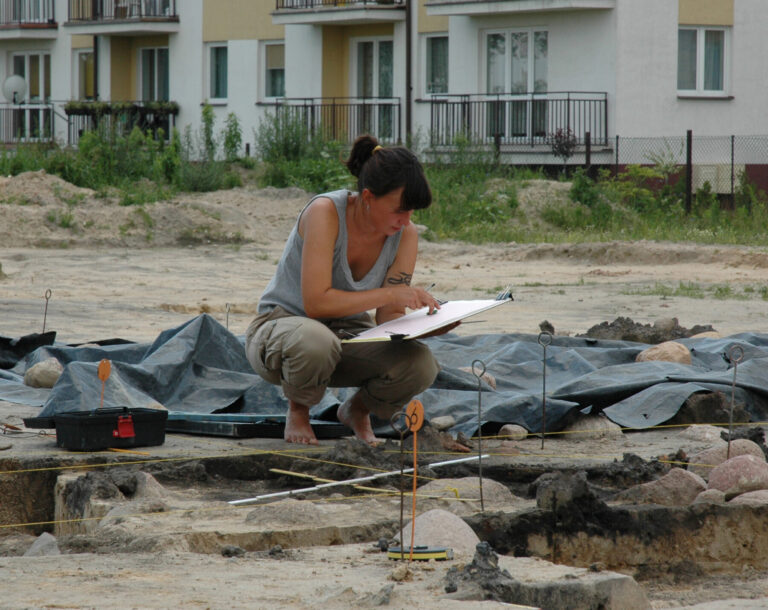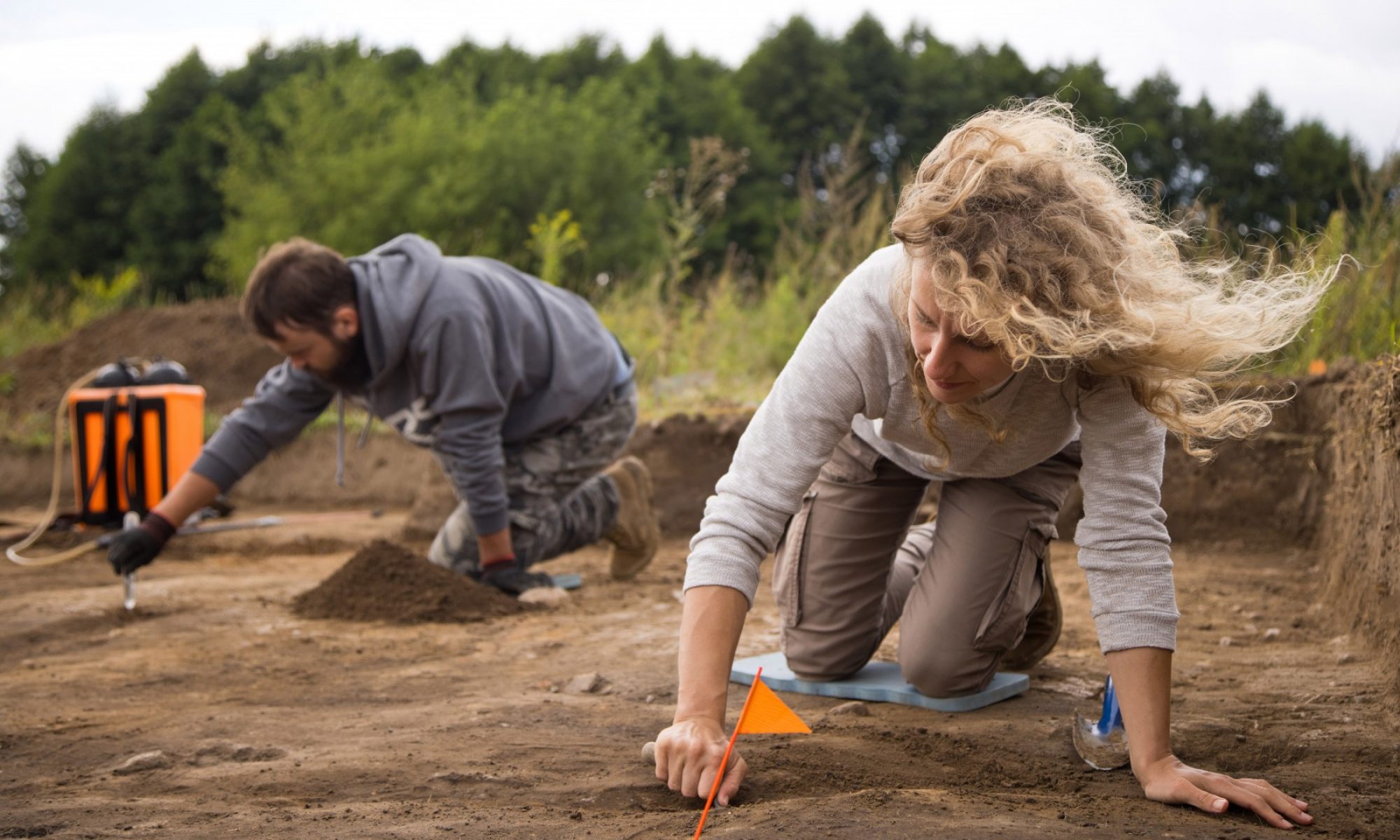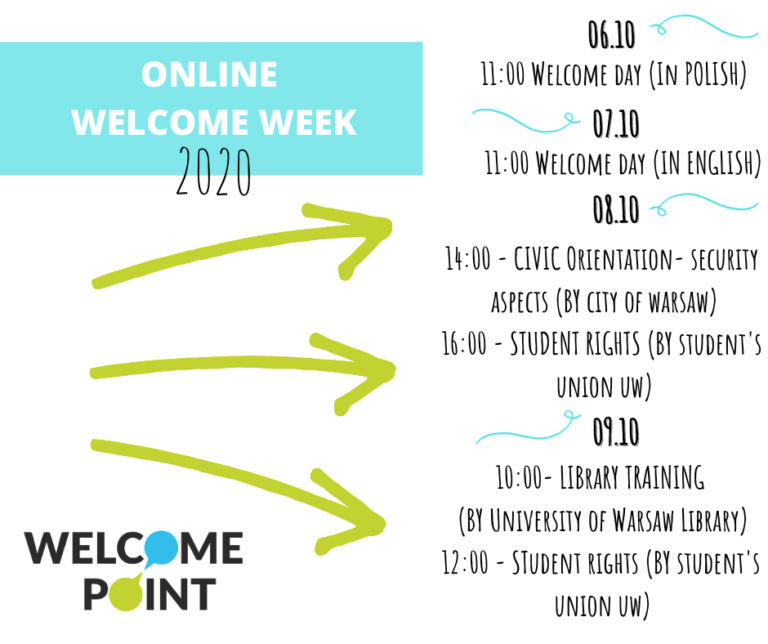
Assoc. Prof. Dr hab. Agnieszka Tomas
Department of Barbaricum and the Roman Provincial Archaeology
ORCID: 0000-0001-9578-8221
E-mail:
agnieszka.tomas@uw.edu.pl
Duty hours – summer semester 24/25:
Fridays 9.45-11.00 a.m., room 3.05
Research interests:
– Roman provincial archaeology (especially European provinces)
– Roman army and limes archaeology
– civil settlement along the Roman frontiers
– topography of Roman military bases and their transformation in Late Antiquity
Professional activity and important achievements:
Employee of the Institute (now the Faculty) since 2007. Coordinator and co-head of non-invasive and excavation research in Bulgaria, Romania and Hungary. Participant of excavations in the Crimea, Russia, and Poland. Scholarship holder of the S. Batory Foundation, the Foundation for Polish Science and the Brzezia Lanckoroński Foundation.
The Head of the Faculty of Archeology Archaeological Expedition of the University of Warsaw in Novae. Currently managing two research projects at the Roman legionary fortress in Novae (northern Bulgaria) and one in Germany (vicus Schwarzenacker).
Vice-Dean for Student’s Affairs in 2020/2021.
Research projects:
Discovering the praetorium. Layout, chronology and function of the commander’s residence in the Roman legionary fortress Novae (today Bulgaria). Polish National Science Centre, No. UMO-2024/53/B/HS3/03816
Novae 2016–2021. Extramural settlement near the Roman legionary fortress at Novae (Lower Moesia) and its fate in Late Antiquity, Polish National Science Centre
Novae 2017–2021. In medio castrorum. Sculptural and epigraphic landscape of the central part of the legionary fortress at Novae, Polish National Science Centre
Novae 2012–2015. Research on settlement structures near the Roman legionary camp at Novae (Lower Moesia) using non-destructive prospection methods, Polish National Science Centre
List of publications:
Monographs
- Inter Moesos et Thraces. The Rural Hinterland of Novae in Lower Moesia (1st – 6th centuries AD), Oxford 2016: Archaeopress (ISBN 9781784913694).
- Living with the Army I. Civil Settlements near Roman Legionary Fortresses in Lower Moesia, Warszawa 2017: Instytut Archeologii (ISBN 978-83-61376-35-4).
- Tomas (with contributions by: M. Jaworski, P. Jaworski, P. Wroniecki, M. Pisz oraz R. Stachowicz-Rybka, M. Moskal-del Hoyo, H. Winter, P. Janik, P. Dyczek, E. Genczewa, B. Kontny, M. Kot, Sz. Modzelewski), Living with the Army II. Novae (Lower Moesia). The Results of Remote Sensing and Field Walking Surveys, 2012-2014, WarsawStudies in Archaeology 4, Brepols Publishers, Turnhout 2022 ISBN 978-2-503-60399-5.
Articles in journals
- “Flasze gliniane z principia w Novae.” Novensia 12, 2000, (z: L. Kovalevskaja, T. Sarnowski): 107–122.
- “Flasze gliniane z Novae.” In: Materiały I Międzynarodowej Studenckiej Konferencji Archeologicznej “Europa Środkowo-wschodnia przez tysiąclecia”, Novensia 13, 2000: 49–67.
- “Flasze gliniane z budowli komendantury w Novae.” Studia i materiały archeologiczne 11, 2003, 157–164.
- “Jugs from Novae. A Study on Finds from 1960-99.” Novensia 14, 2003: 119–184.
- “Municipium Novensium? Report On The Field Survey At Ostrite Mogili, Veliko Turnovo District.” Światowit 47/A, 2006: 115–128.
- “Inter Moesos et Thraces. A Contribution To The Studies On The Rural Hinterland Of Novae In Lower Moesia.” Archeologia 58, (2007) 2009: 31–147.
- “Connecting to Public Water: The Rural Landscape and Water Supply of Lower Moesia.” Archaeologia Bulgarica 15/2, 2011: 59–72.
- “Reading Gender and Social Life in Military Spaces.” Światowit 49/A, (2009-2010) 2011: 139–152.
- “Canabae legionis I Italicae: state of research on civil settlements accompanying the legionary camp in Novae (Lower Moesia) compared to relevant Lower Danubian sites.” Światowit L/A, (2011) 2012: 155–168.
- “A New Dedicatory Inscription from Novae (Lower Moesia).” Światowit 52/A, (2013) 2014: 79–86.
- “A Six-century pottery kiln from Novae (Moesia secunda). A contribution to the local pottery manufacturing.” Archaeologia Bulgarica 19/3, 2015: 63–74.
- A. Tomas, Z. Kis, “A Roman site in the Sarviz River Valley (Pannonia Inferior). Preliminary results.” Acta Archaeologica Academiae Scientiarum Hungaricae 66/1, 2015: 203–215.
- “Life on the Frontier: Roman Military Families in Lower Moesia.” Studia Europaea Gnesnensia 16, 2017: 225-257.
- “Castra et canabae legionis. Organizacja przestrzeni i administracja cywilnych osiedli przy rzymskich obozach legionowych.” In: Między murami miasta a ścianami koszar – garnizony i historia miejska na przestrzeni dziejów [=Zeszyty Naukowe UJ. Prace Historyczne 145 (4)], Kraków 2018, 665–683.
- A. Tomas, M. Pisz, Al. Hegyi, “Non-destructive research in the surroundings of the Roman fort Tibiscum (Romania).” Archaeological Prospection 27/1, 2020: 1–20.
- A. Tomas, E. Jaskulska, J. Dworniak-Jarych, E Jęczmienowski, T. Dziurdzik, A. Mech, “The eastern necropolis of Novae.” Archaeologia Bulgarica 24/3, 2020: 37–63.
- “What’s for dinner today? Remarks on the provisions and diet of Roman soldiers during the Principate.” Studia Antiquitatis et Medii Aevi Incohantis 5, 2020: 128–154.
- A. Łajtar, T. Płóciennik, A. Tomas, “A Third-Century Senator Twice-Honoured in Novae.” Zeitschrift fur Papyrologie und Epigraphik 223, 2022: 249–253.
Monograph articles and chapters:
- Tomas, T. Sarnowski, “Marcus Aurelius Statianus from Lower Moesia. A Note on His Origin, Status and Business.” In: The Lower Danube in Antiquity (VI BC-VI AD), L. Vagalinski, N. Sharankov (eds), Tutrakan, Sofia 2007, 231–234.
- “Extramural area.” In: Novae. An archaeological Guide, Warszawa 2012, 77–92. (z: T. Sarnowski ed., A.B. Biernacki, M. Lemke, P. Vladkova).
- “Pachnące miasta czy slumsy? Urządzenia sanitarne w cywilnych osiedlach przy rzymskich bazach wojskowych.” In: Czystość i brud. Higiena w starożytności, W. Korpalska, W. Ślusarczyk (eds), Bydgoszcz 2013, 139–154.
- “Izv”n krepostnite steni.” In: Nove (Novae). Arheologičeski p”tevoditel Sofia-Warszawa 2014, 77–89 (z: T. Sarnowski ed., A.B. Biernacki, P. Vladkova, M. Lemke, E. Jordanov).
- Tomas, P. Wroniecki, “Roman legion and attached civilian settlement as a factor of Romanisation and landscape changes: a case of Novae (northern Bulgaria).” In: Reading Landscape as A Factor in Creating Identity. International Conference, Jarosław, 22-24 June, 2012, W. Bedyński, I. Povedàk (eds), Warszawa 2014, 49–61.
- “Non-destructive survey in Novae (Lower Moesia).” In: Limes XXII. Proceedings of the 22nd International Congress of Roman Frontier Studies Ruse, Bulgaria, September 2012, L. Vagalinski, N. Sharankov (eds.), Sofia 2015, 881–888.
- “Dionysus or Liber Pater? The Evidence of the Bacchic Cult at Novae (castra et canabae legionis) and in its Hinterland.” In: Ad fines imperii Romani. Studia Thaddaeo Sarnowski ab amicis, collegis discipulisque dedicata, A. Tomas (ed.), Warszawa 2015, 257–275.
- Tomas, M. Lemke, “The Mithreum at Novae Revisited.” In: Ad fines imperii Romani. Studia Thaddaeo Sarnowski ab amicis, collegis discipulisque dedicata, Tomas (ed.), Warszawa 2015, 227–247.
- “Female family members related to soldiers and officers of the legio I Italica. A case study.” In: Colonization and Romanization in Moesia Inferior. Premises of A Contrastive Approach, L. Mihailescu-Bîrliba (ed.), Kaiserlautern: Harrassovitz, 2015, 93–124.
- “Tracing Civilian Settlement in the Surroundings of Novae (Lower Moesia). Sources, Investigations, Results. In: Romans and the Others in the Lower Danube Region in the First Century BC – Third Century AD. Proceedings of the International Colloquium Tulcea, 7-11 of October 2015, Cr.-G. Alexandrescu (ed.), Biblioteca Istro-Pontică. Seria Archeologie, 12, Cluj-Napoca 2016, 191–204.
- “Pre-Roman Settlements in the Hinterland of Novae in Lower Moesia: a re-assessment of the displacements of the conquered tribes by the Romans. In: Romans in the Middle and Lower Danube Valley: Case Studies in Archaeology, Epigraphy, and History, first century BC – fifth century AD, E. de Sena, C. Timoc (eds), B.A.R. Int. Ser. 2882, Oxford: Archaeopress, 2018, 13–22.
- “Civil settlement at Novae (Moesia inferior).” In: Limes XXIII. Proceedings of the 23rd International Congress of Roman Frontier Studies Ingolstadt, Germany, September 2015, C.S. Sommer, S. Matesić (eds.), Ingolstadt 2018, 748–755.
- “The canabae legionis in Lower Moesia. Some observations.” In: Sacrum et profanum, E. Klenina (ed.), Novae. Studies and Materials, VI, Poznań 2018, 67–76.
- “Kłódka z wizerunkiem twarzy znaleziona w Novae.” In: Donum Cordis. Księga dedykowana Jerzemu Kolendo, K. Jakubiak (ed.), Warszawa 2019, 374–391.
- “Reconstruction process of the civil settlement near Novae (Moesia inferior). Epigraphic evidence.” In: Ad ripam fluminis Danuvi. Papers of the 3rd International Conference on the Roman Danubian Provinces Vienna, 11th-14th November 2015, Fr. Mitthoff, L. Zerbini, Ch. Cenati (eds), Tyche Suppl. 11, 2021, 39–66. Wien: Holzhausen.
- “Stamped Military Building Materials from the Funerary Context. The Case of the Eastern Necropolis of Novae (Moesia inferior).” In: Antiquitas Aeterna. Essays on Ancient Archaeology and History Dedicated to Leszek Mrozewicz on his 70th Birthday, K. Balbuza, M. Duch, Z. Kaczmarek, K. Królczyk, A. Tatarkiewicz (eds), Philippika, XX, 2021, 418–423. Wiesbaden: Harrassowitz.
- “When a cemetery must become forgotten. Funerary rites, commemoration and the fate of the eastern necropolis at Novae.” In: Nunc decet caput impedire myrto. Studies Presented to Professor Piotr Dyczek on the Occasion of His 65th Birthday, Warszawa 2021.
- “The Lower Moesian canabae in the 1st and the early 2nd” In: 4th International Conference on the Roman Danubian Provinces: Traian and the Danubian Provinces. The Political, Economic, and Religious Life in the Danubian Provinces. Zagreb – Croatia, November 15th to 17th, 2017, Proceedings, D. Toncinić (ed.), Zagreb 2021.
Field reports:
- Sarnowski, L. Kovalevskaja, A. Tomas, “Novae – castra legionis, 2006-2009. Preliminary report on the excavations of the University of Warsaw Archaeological Expedition.” Archeologia 59, (2008) 2010: 153–172.
- Sarnowski, A. Tomas, “The Roman Legionary Defences. Excavations of 2009 and 2010.” Światowit 48/A, (2006-2010) 2011: 185–186.
- Sarnowski, L. Kovalevskaja, “Principia et munitiones castrorum. Headquarters Building and Legionary Defences.” Światowit 50/A, (2011), 2012: 189–194.
- “Non-Destructive Investigations in the Extramural Area of Novae (Lower Moesia) in 2012.” Światowit 51/A, (2012) 2013: 157–161.
- Tomas, M. Jaworski, “Non-Destructive Archaeological Investigations in the Sárviz River Valley (Hungary).” Światowit 51/A, (2012) 2013: 171–176.
- Sarnowski, L. Kovalevskaja, A. Tomas, P. Zakrzewski “Novae 2012. Munitiones castrorum. Legionary defences, Światowit 51/A, (2012) 2013, 145–150.
- Tomas, E. Gencheva, “Geofizični izsledvaniâ na teritoriâta na kanabite na Novae.” AOR prez 2012 g., Sofia 2013, 250–251.
- A .Tomas, E. Gencheva, “Geofizični izsledvaniâ na teritoriâta na kanabite na Novae.” In: AOR prez 2013 g., Sofia 2014, 318–319.
- “Non-Destructive Investigations in the Extramural Area of Novae (Lower Moesia) in 2013.” Światowit 52/A, (2013) 2014: 197–206.
- Sarnowski, L. Kovalevskaja, A. Tomas, P. Zakrzewski, T. Dziurdzik, E. Jęczmienowski, “Novae 2013. Legionary Defences and Headquarters Building.” Światowit 52/A, (2013) 2014: 179–188.
- Sarnowski, L. Kovalevskaja, A. Tomas, R. Chowaniec, P. Zakrzewski, “Novae – castra legionis, 2010-1012. Preliminary report on the excavations of the University of Warsaw Archaeological Expedition.” Archeologia 62-63, (2011-12), 2014: 75–90.
- “Non-Destructive Investigations in the Extramural Area of Novae (Lower Moesia) in 2014.” Światowit 53/A, (2014) 2015: 205–212.
- “Geofizični proučvanija i obhoždanija v okolnostite na Nove.” In: AOR prez 2014 g., Sofia 2015, 409–410.
- “Mitreum do rimskija legionen lager v Novae.” In: AOR prez 2015 g., Sofia 2016, 443–447.
- Sarnowski, L. Kovalevskaja, A. Tomas, P. Zakrzewski, T. Dziurdzik, E. Jęczmienowski “Novae 2014. Legionary Defences and the Rear Part of the Fortress.” Światowit 53/A, (2014) 2016: 185–192.
- Sarnowski, L. Kovalevskaja, A. Tomas, P. Zakrzewski, T. Dziurdzik, E. Jęczmienowski “Novae – castra, canabae, vicus, 2013-2015. Preliminary report on the Excavations and Prospection Surveys of the University of Warsaw Archaeological Expedition.” Archeologia 65, (2014) 2016: 177–203.
- “Arheologičeski proučvanija na ukrepitelnata sistema i sondaži v razšireneto na Nove.” In: AOR prez 2016 g., Sofija 2017, 272–274.
- “Arheologičeski proučvanija na ukrepitelnata sistema i sondaži v razšireneto na Nove.” In: AOR prez 2016 g., Sofija 2017, 272–274.
- Sarnowski, L. Kovalevskaja, A. Tomas, T. Dziurdzik, E. Jęczmienowski, P. Zakrzewski “Novae 2015. Legionary defences and extramural settlement.” Światowit 54-55/A/B, (2015-2016) 2018: 322–328.
- “Razkopki v razširenijeto na Nove (Nove II).” In: AOR prez 2018 g., Sofija 2019, 237–239.
- “Iztočen nekropol na lagera i kăasnoantičnoto razširene na Nove (Nove II).” In: AOR prez 2019 g., čast 2, Sofija 2020, 678–681.
- “Novae. Iztočen nekropol i retentura sinistra.” In: AOR prez 2021 g., Sofija 2022: NAIM BAN (przyjęte do druku).
- „Novae – Sektor XIII (retentura)”, In: AOR prez 2022 g., Sofija 2023: NAIM BAN (przyjęte do druku).
Reviews:
- Michael Doneus, Christian Gugl, Nives Doneus, Die Canabae von Carnuntum eine Modellstudie der Erforschung römischer Lagervorstädte Von der Luftbildprospektion zur siedlungsarchäologischen Synthese, Der Römische Limes in Österreich, Heft 47, Wien 2013 (Archeologia 62-63, 2011-2012), 111–113.
- Tomasz Waliszewski, Elaion. Despre producția uleiului de măsline în Syro-Palestina romană și timpuriu bizantină… dar nu numai (Lucus. Acta Centri Lucusiensis 4A, 2016, Timişoara, 78–80.
- O perspectivă asupra Moesiei inferior prin prisma fundamentelor sale militare. Michał Duch, Economic Role of the Roman Army in the province of Lower Moesia (Moesia inferior), Acta Humanistica Gnesnensia, XVI, 5 maps, 4 figures, Gniezno 2017, 284 pp. (edition in Polish: Gospodarcza rola armii rzymskiej w prowincji Mezja Dolna (Moesia inferior), Studia Europaea Gnesnensia, XXIV, Poznań – Gniezno 2016, Lucus. Acta Centri Lucusiensis 5B, 2017, 105–108.
- Szilvia Biró, Die zivilen vici in Pannonien, Römisch-Germanisches Zentralmuseum, Monographien, 131, Mainz 2017, Bonner Jahrbücher 217, 2018, 546-550.
- Noi radiografii arheologice asupra spațiului nord pontic. The Crimea and the Northern Black Sea Coast in Archaeological Research 1956-2013 / Крым и северное побережье Чёрного моря в археологических исследованиях 1956-2013, M. Matera, R. Karasiewicz-Szczypiorski (eds.), Światowit Supplement Series C: Pontica et Caucasica, vol. I, Warszawa 2017), Lucus. Acta Centri Lucusiensis 6B, 2018, 82–87.
Popularization:
- “Na straży granic rzymskiego cesarstwa.” In: Blisko i daleko. Księga Jubileuszowa Instytutu Archeologii Uniwersytetu Warszawskiego, Warszawa 2009, 203-207 (z: T. Sarnowski).
- “Trochę Rzymu w północnej Bułgarii.” Z bliska i z daleka 1, 2011: 72-77 (z: T. Sarnowski).
- “Armia rzymska i prostytucja – mit czy rzeczywistość?” Archeo UW 1, 2013: 41-53.
- “Po co Ty się malujesz?! O rzymskim poprawianiu urody i niezmiennej naturze jego krytyków.” Gazeta Biskupińska 6, 2016: 2–3.




